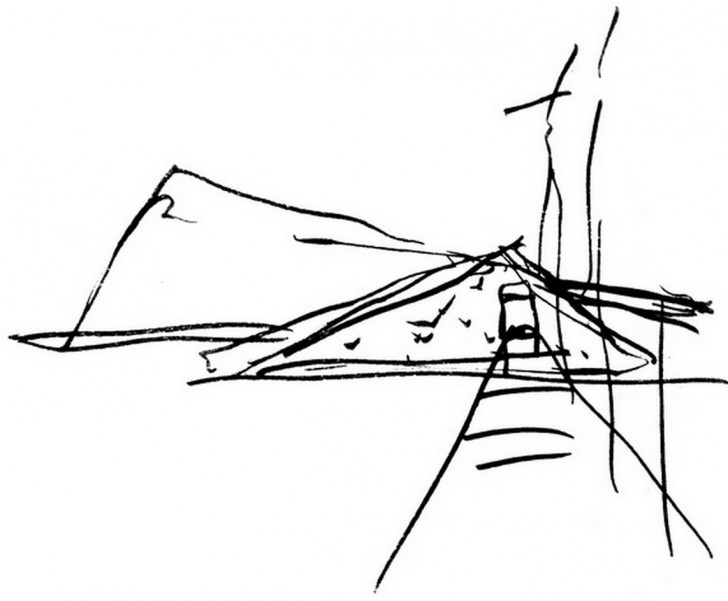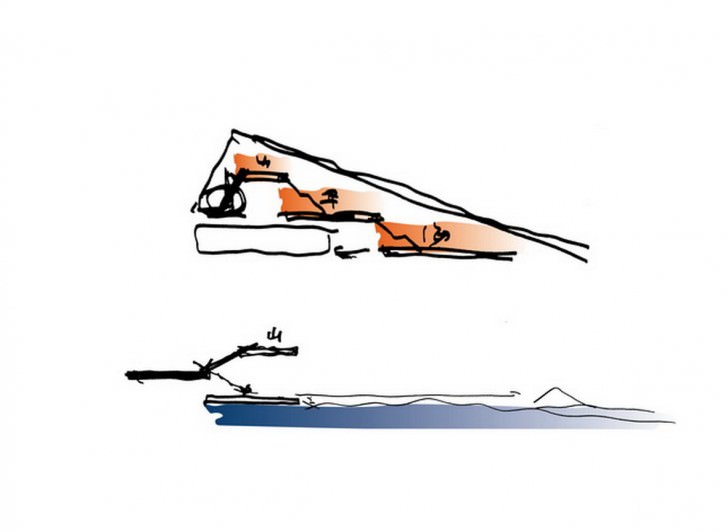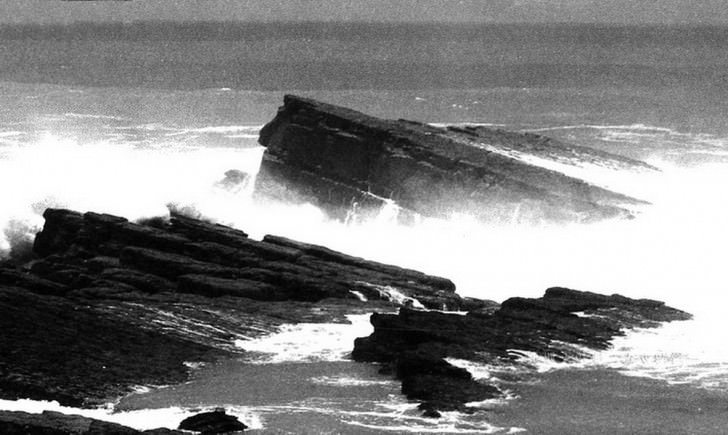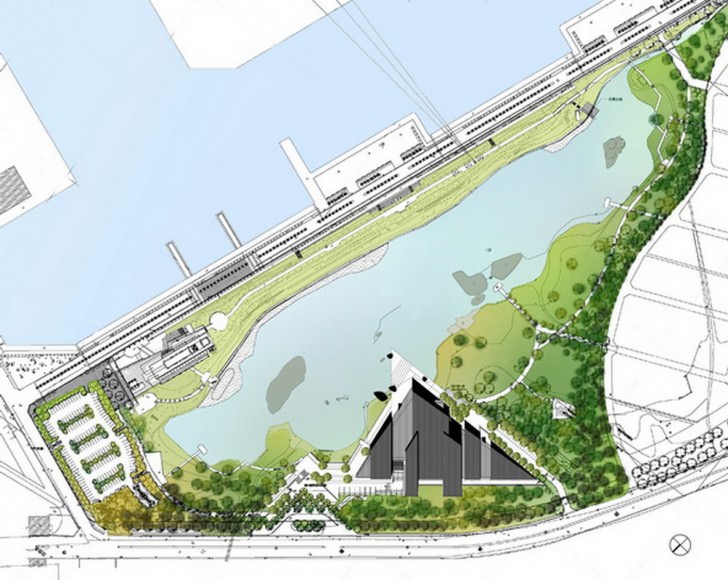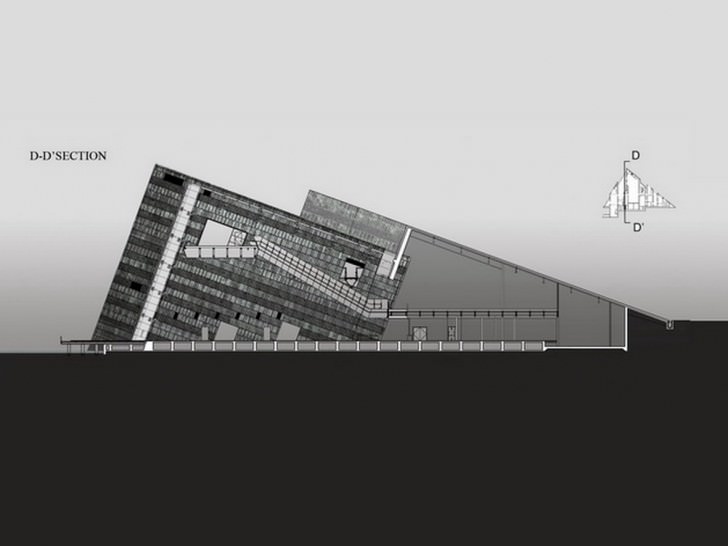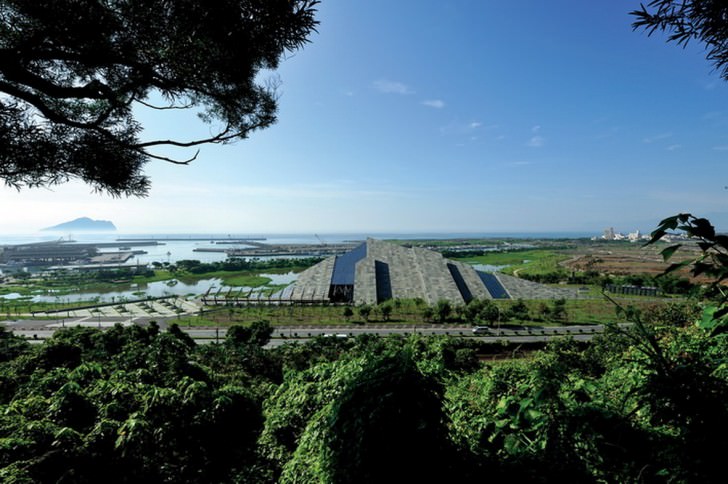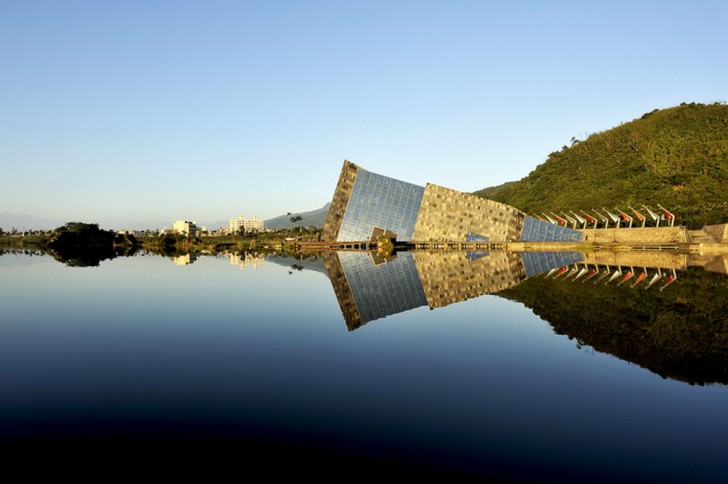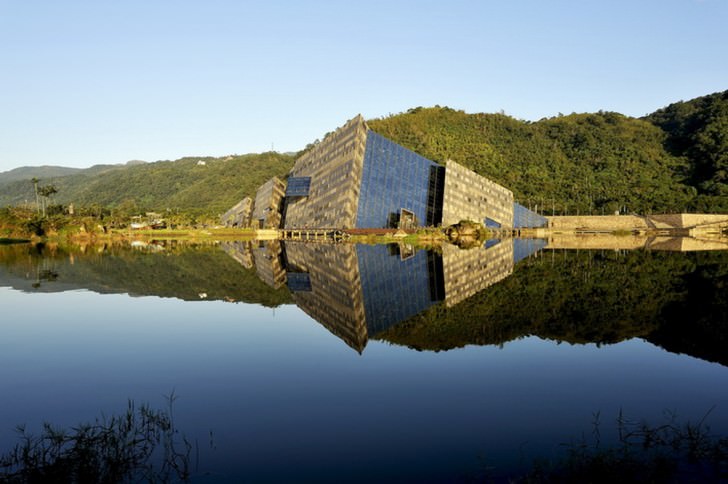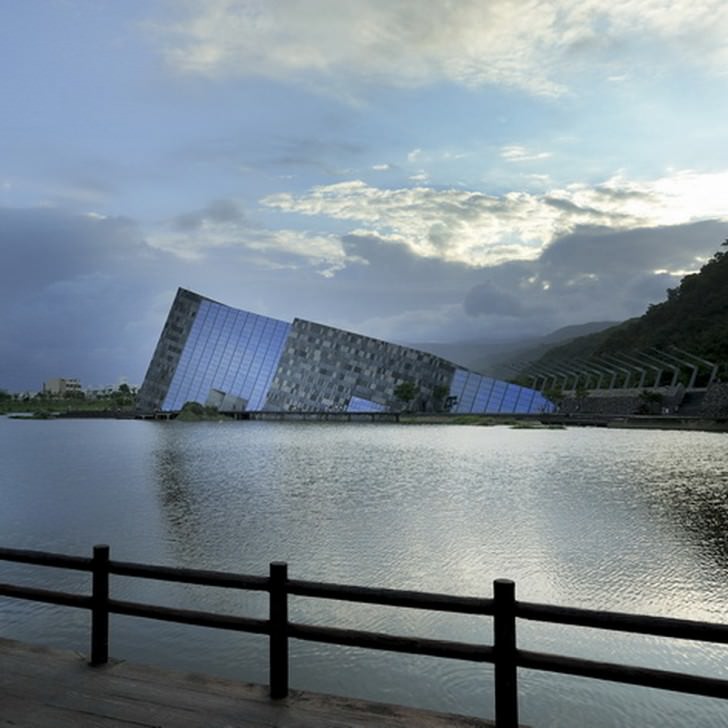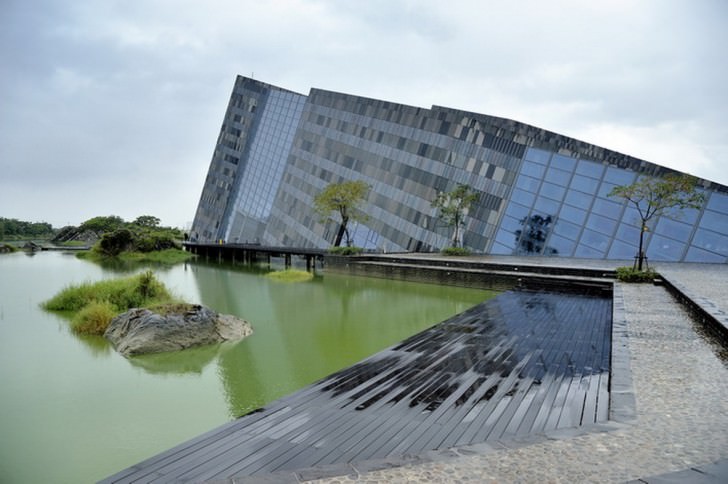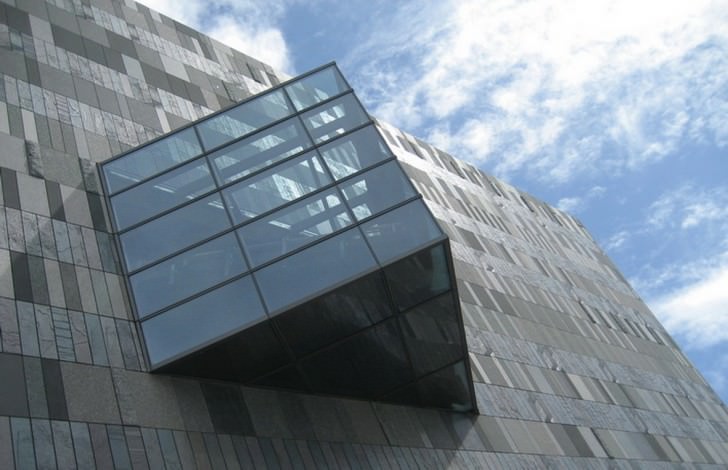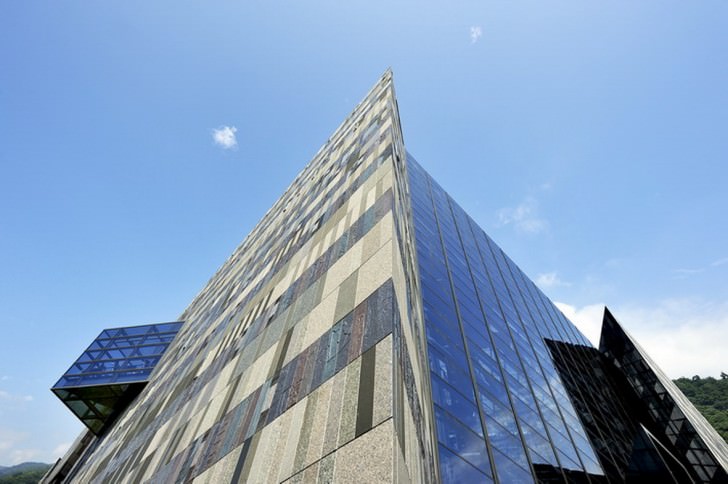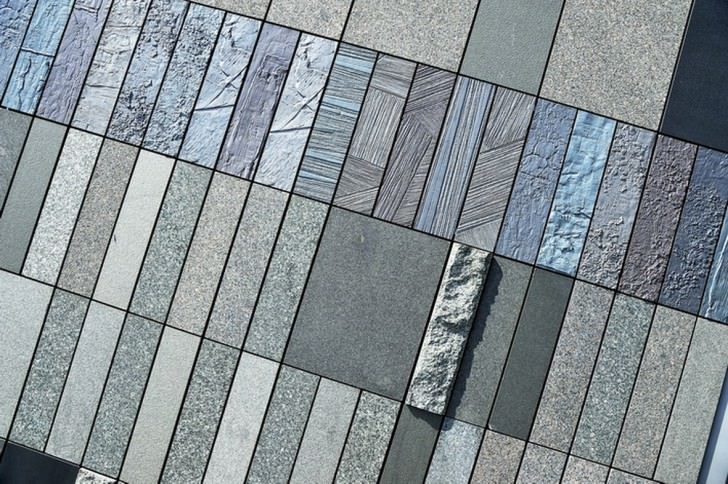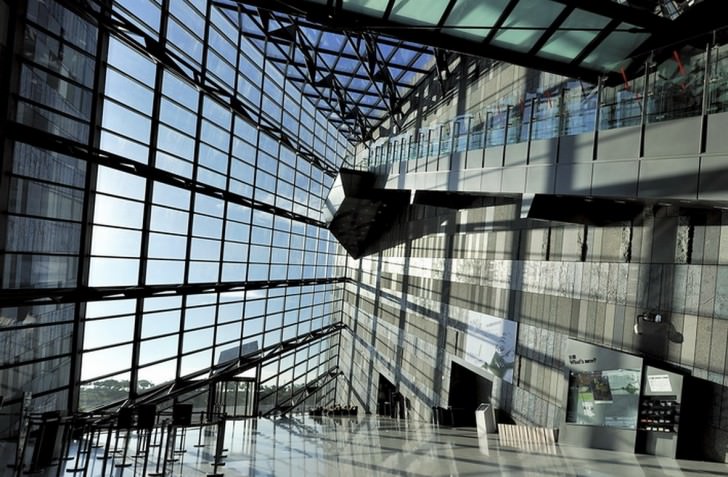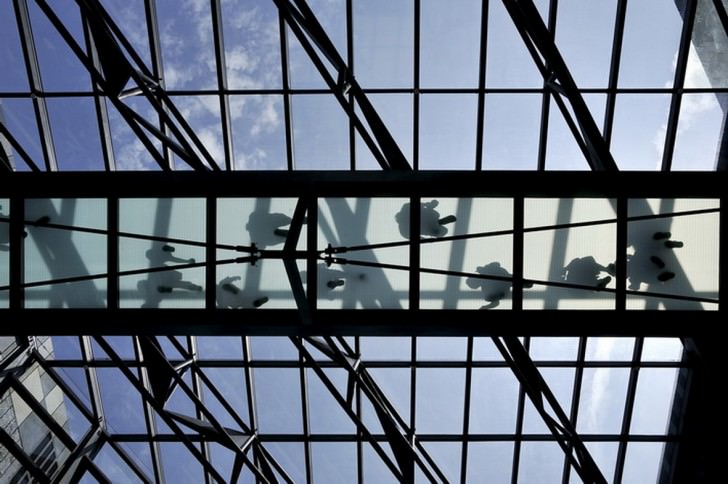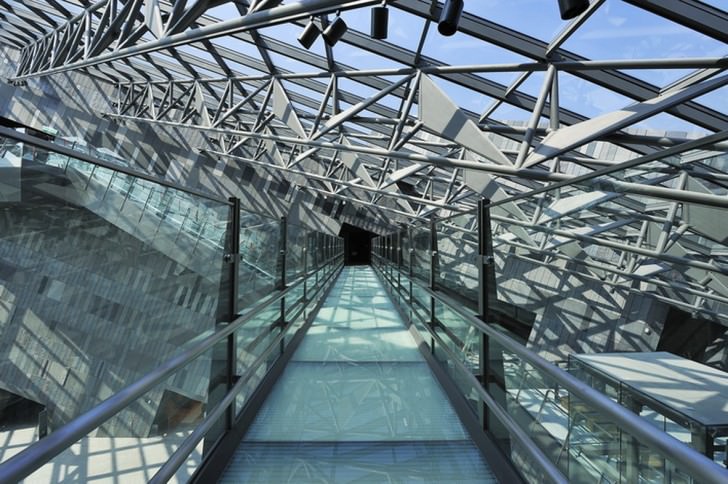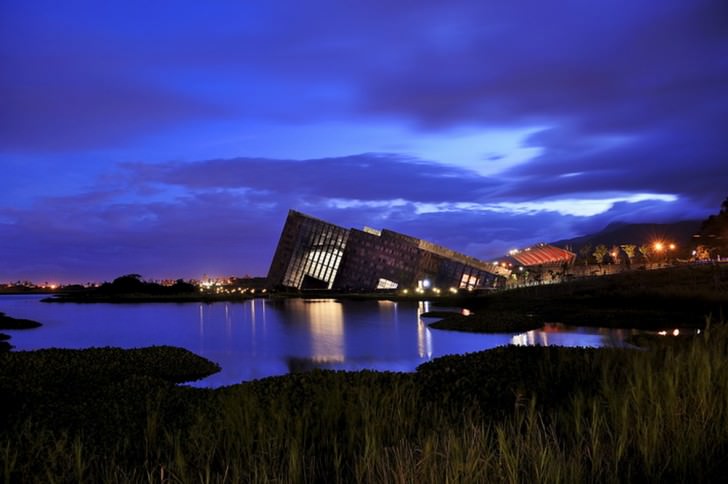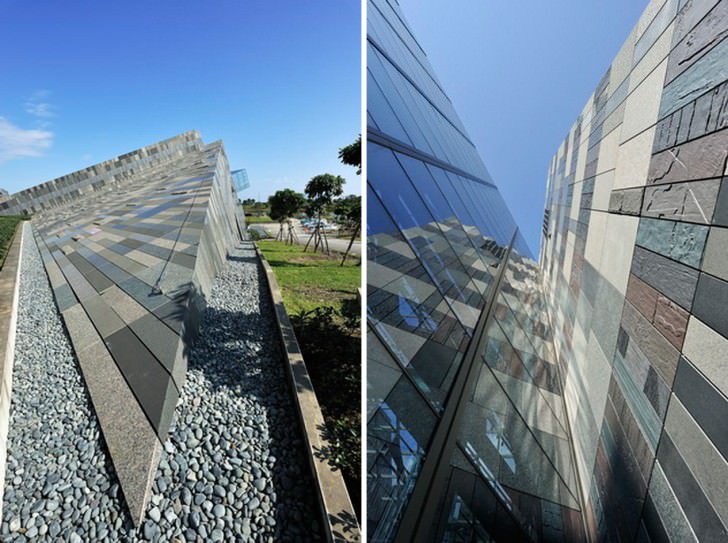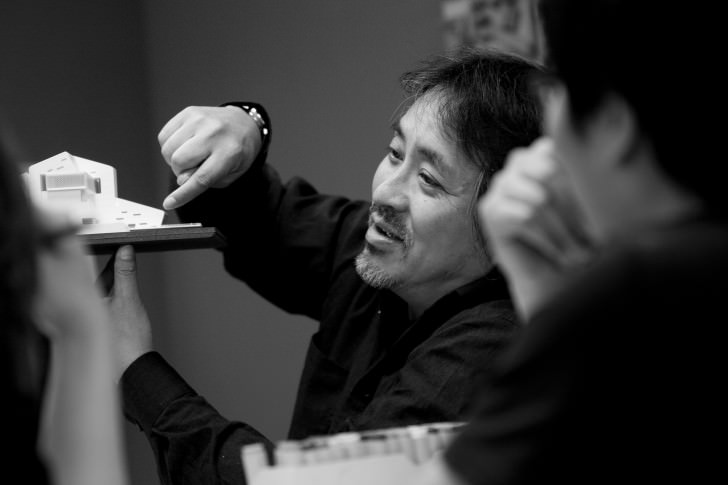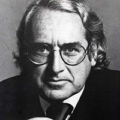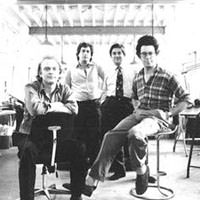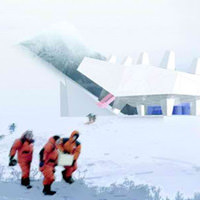Taking forms from the cuesta rock formation in and around the site, the museum spaces shift in and out of the “rock”.
This museum by Kris Yao Architect is adjacent to the Wushih Port, a once prosperous harbor that is now a wetland. The museum is designed to reflect the unique history, the culture, and the landscape in Lanyang. In addition to reconstructing the harbor’s history, the museum also introduces Yilan’s rich wetland ecology as a part of an outdoor exhibition.
| Project | Lanyang Museum |
|---|---|
| Lanyang Museum | Yilan County, Taiwan |
| Clients | Yilan County, Taiwan |
| Architect | Kris Yao | Artech Architects |
| Floor Levels | 4 Floors above ground |
| Building Structure | Reinforced Concrete, Steel Framing |
| Materials | Cast Aluminum Panels, Granites (India Black, Caledonia, Rusteinburg, Verde Lava, Olympia White, Zimbabwe Black), Low-E glass |
| Building Use | Museum |
| Site Area | 39,426㎡ |
| Lot Coverage Area | 7,682㎡ |
| Total Floor Area | 12,473㎡ |
| Total Floor Area | 2000.2-2003.6 |
| Construction Phase | 2004.6-2010.3 |
| Completion Date | 2010.10 |
| Photographs | Jeffrey Cheng, Chi-Yi Chang |
The volume’s dominant geometry is inspired by the natural Cuesta rock formation, commonly found on the coast. By inserting the triangular mass into the ground at an angle, the minimalist architectural geometry mimics the nearby terrain. The building consists of interlacing solid and glass volumes, where the solid volume is reserved for exhibition and administrative spaces and the glass volume serves as the main lobby and the restaurant area. The gaps between the volumes provide natural lighting and divisions between different functional spaces. The view of the Guishan Island (Turtle Mountain Island) at a distance acts as a constant reference point for visitors, as they experience the alternating inside/outside, solid/void journey through the museum.
A range of granite and cast aluminum panels are used on the building’s exterior to represent the reef’s natural erosion process while incorporating the image of seasonal changes over the Lang Yang plain. These panels of varied textures and sizes translate the musical notes and the rhythmic tempos. The music we choose to represent is Antonio Vivaldi’s Four Seasons Concerto.
Note: All images courtesy of Artech Architects, photos by Jeffrey Cheng.
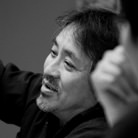 | Kris YaoMr. Kris Yao obtained a Bachelor of Architecture from Tunghai University in 1975, and a Master of Architecture from University of California, Berkeley in 1978. In 1985, Mr. Kris Yao established Artech Architects in Taipei, Taiwan, and in 2001, Artech Architects & Designers Limited in Shanghai, China. In 1999, the London-based World Architecture Magazine recognized Artech Architects as “the most impressive practice in Taipei,” and Mr. Yao “at the forefront of the revolution” of the architectural scene in Taiwan. |

